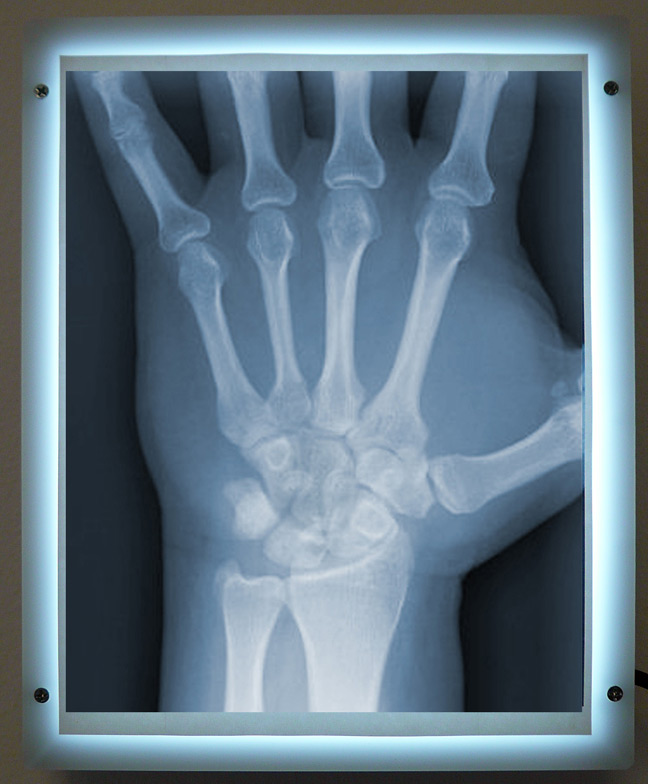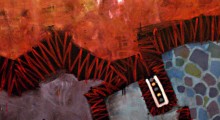Where are you from, Miguel?
I’m from Yuriria, Guanajuato México. We came to Chicago when I was 8 years old. I grew up in Little Village.
How would you say growing up in La Villita has affected you or your art?
I wouldn’t say that living in La Villita has affected me as much as living in Pilsen. I’ve lived in Pilsen for 15 years now. There are many murals and artists in Pilsen. Maybe that’s what’s affected me the most. Walking by all the murals inspired me more. La Villita is growing into an artist community, but it’s still not like Pilsen. I’ve watched Pilsen change over the years. I started hanging out and moved here in the mid 90s. Nowadays there’s a lot of movement, there’s a lot of new students and condos.

What role do you feel the artists have had in the gentrification of Pilsen?
You could blame the artists. They make the neighborhood look cool and people want to live next to them. For a while there were a group of artists fighting gentrification in the early 2000s. They went to court to fight against tiffs, property taxing. They were a group of artists, trying to slow down the gentrification processes. But the Halsted scene has been around since the 70s. There’s a lot of galleries. They do their shows. They close, and then a new gallery comes in. They promote themselves well. And the realtors control everything that’s happening there. There are more alternative spaces across the Halsted divide, west down 18th St.
How did you get started in community arts?
Being an artist. I’ve been organizing art exhibits since ’98 on and off. I was part of a collective called Polvo, a black and white magazine, tabloid format for 10 years. Aside from curating shows we’ve opened up a store front.
How was Polvo different from other publications?
There’s not a lot of innovative art publications showing ample contemporary art work and installations. The Mexican Fine Arts Museum shows their stuff, more traditional. Whereas we were showing installations, videos, and performances. Stuff you can’t really sell, but you experience for the period shown. That was under Polvo; now I’m doing my own thing.
How is Antena different from other galleries?
I try to give the artists freedom to show what they want. You don’t see that at the commercial galleries. It’s also my living space. It’s like an alternative art space. Antena gives me the freedom to choose artists that are not commercial.
Antena’s mission is to promote the artwork that isn’t shown anywhere else. I show artwork that you don’t see on Halsted or at the Mexican Fine Arts Museum, or up north. It’s not meant to be commercial. Antena’s meant to show work, to show how artists express themselves.
When artists show here, they’re not pressured to show a certain amount of work. They’re not pressured to sell their art. I don’t take a percentage or divi up their take. When an artist has a show here they can do anything to the space. They can do a huge installation or small showings. Whatever they want.
How do the artists exhibited at Antena react to your approach?
The artists are usually surprised and appreciative of the freedom to do anything. It helps them grow as an artist. They can document what they do here and approach other spaces, museums, whatever. Some have had showings at the Museum of Contemporary Art as a result.
What was the last show you were in?
The last show I did was on new media, social gatherings in a 3D virtual world. For the past 3 years artists have been doing art that only exists there, on secondlife.com. My physical space is Antena, we use prints of characters and work of artists in 2nd life. You create an avatar. You can give it any kind of hair, buy clothes, and walk around this world and socialize. The exhibit was motivated by the website. Artists are doing new things virtually, utilizing these new media.
What is new media art?
Artists throughout the ages have used different tools. When film and video became introduced to the public. artists experimented with doing artwork in the medium. Now artists explore the virtual world through avatars. Cao Fei is famous in the contemporary art world. He’s showing right now at Antena.
How are these virtual art worlds changing the arts?
I think these virtual worlds are changing the art world and the public’s perception of what art is. Art can be anything, not just a drawing. It can be computer animation, a video game, anything. I like this guy Patrick Lichty. He’s the one that turned me on to new media artwork. He experiments with the new stuff. He does video and animation, 2D work, and sculpture. He’s like a renaissance man.
In the political front people are recording youtube videos, using digital media more and more. Art can be anything that can reach the masses or just a five minute video. Even now, artists are doing photography, cell phone art work. They do huge prints of an image taken with 5 mega pixel camera. I think artists use the tools they have at the time. If something new pops up, I think artists will use that to do something too.
Since new media arts and digital media, we’ve seen a democratization of the art. Taking some of the power, and exclusivity in the art world away from the elite. I think anyone can and should do their art without limitations.
antena
1765 S. Laflin, St.
Chicago, IL 60608
antenapilsen (at) gmail.com
Hours: by appointment
(773) 257-3534
Next show at Antena Gallery: Sangre, Sudor y Papeles: Artists examine the immigration issue
Artists: Saul Aguirre, Adriana Baltazar, Miguel Cortez, Salvador Jiménez-Flores, Jaime Mendoz, Jenny Priego, Elvia Rodriguez-Ochoa
Opening Friday June 25th from 6pm-10pm
June 25 – July 24, 2010
See the Antena BLOG
“antena” is a new project space headed by Miguel Cortez of Polvo and located in Chicago’s Pilsen neighborhood. The Spanish word “antena” means a device that is a transducer designed to transmit or receive electromagnetic waves, but in this case it is meant to define it as a cultural space that symbolically transmits/broadcasts art ideas, new media, and installation projects on a local and global scale.






Hi friends at Gozamos. The artist I was talking about is Cao Fei, a multimedia artist from China. It is misspelled as “Cowface” in the article. 🙂
I really loved this article! Thanks!
I really loved this article! Thanks!